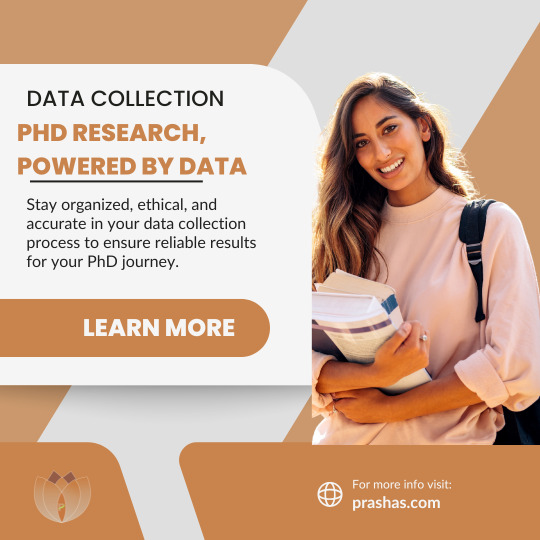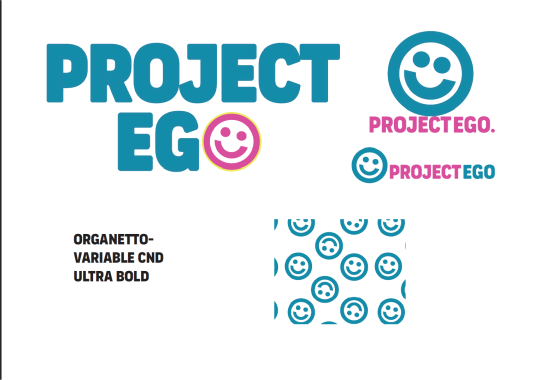#researchprocess
Explore tagged Tumblr posts
Text

Mastering Data Collection for Your PhD 📚💡
Gathering data for your PhD project? Make sure it’s accurate, reliable, and actionable! Here are some expert tips to ensure your data collection process sets you up for success:
Choose the right data collection method for your study goals. Ensure validity and reliability in your tools. Stay organized and document every step. Maintain ethical standards and consent. Consistently review and validate your data.
#PhDResearch#DataCollection#AcademicSuccess#PhDLife#ResearchTips#GradSchool#DoctoralResearch#ResearchMethodology#PhDJourney#DataAnalysis#PhDStudent#ResearchProcess#AcademicGrowth#ScientificMethod
0 notes
Text
Research methodology
Want to ensure readers understand your research thoroughly? Learn how to write a strong methodology section that clarifies your methods and justifies their role in answering your research questions.
For more info: URL: https://ondezx.com/review-paper-format-and-writing Mail: [email protected] Mob No:+91 9791191199

#literaturereviewmethodology#dissertationmethodology#methodologyinresearchproposal#thesismethodology#researchprocess#phdresearchmethodology
0 notes
Text

Using PhDGuides for PhD guidance can provide various advantages, especially if you are undertaking a PhD programme yourself. Here are some advantages of receiving advice from PhDguides.org.
PhDGuides may be extremely beneficial during a Ph.D. programme in a variety of ways: Expertise and Knowledge Research Direction Methodological Support Personal Development Career Guidance
Overall, PhDGuides may help you improve the quality of your research, broaden your professional network, and provide essential support and mentorship as you go through your PhD programme.
For More details please visit us at: https://phdguides.org/resources/
Talk about your study on the phone with one of our specialists. wa.me/+916280713958
Don't Struggle Alone, Let Our Experienced Mentors Guide you Through You PhD
#PhD#researchguidance#thesiswriting#Researchpaperwriting#phdwriting#PhDAssistance#guidance#PhDGuidance#phdguides#researchformat#mentorship#resources#phdmentor#phdmotivation#academicresearch#researchdesign#researchprocess#resourceaquisition#mentoring#guidanceandcounselling#guidancecounselling#phdcandidates
0 notes
Text
youtube
Email : [email protected] | Website : https://clingenious.com | Linkedin : https://www.linkedin.com/company/Clingenious | Call : +917997101799
Automatic Supplies. | Dr. Bharadwaz | Clinical Research About Video : Explore the innovative "Automatic Supplies" system at Fidicus Homeopathy, introduced by Dr. Bharadwaz, our esteemed chief doctor. This breakthrough ensures timely delivery of medicines and personalized care for every patient. Learn how technology meets homeopathy to bring seamless healthcare to your doorstep. Watch now to see how Fidicus Homeopathy continues to revolutionize treatment with transparency, trust, and the highest success rates in personalized care.
Clingenious #ClingeniousResearch #ClinicalResearch #ClinicalInteractiveSystem #ClingeniousHealth #DrBharadwaz #Helseform #HelseformFitness #Health #Fitness #Fidicus #FidicusHomeopathy #Homeopathy #Medicine #Surgery
ResearchVisits #ClinicalVisits #ScreeningVisit #FollowUpVisit #BaselineVisit #CloseOutVisit #MedicalVisits #StudyParticipation #ParticipantVisits #ResearchProcess #ClinicalTrialVisits #HealthcareVisits #StudyMonitoring #VisitSchedule #TrialManagement
CIRS #ClinicalIRT #IVR #IVRS #IWR #IWRS #IXR #IXRS #IRT #RTSM #ePRO #eCOA #ClinicalSupplies #ClinicalTrailSupplies #ClinicalSupplyChain #ClinicalSuppliesForcasting About Clingenious Research :
Empower to deliver breakthroughs with the finest Clinical Interactive System product and project services .
0 notes
Text
youtube
Research Process - Research Aptitude | Research Methodology
#research #researchprocess #researchaptitude #researchmethods #researchmethodology #ugcnet #ugcnetpaper1 #easynotes4u #easynotes4uonline #drgauravjangra
https://youtu.be/Sao5Vcn4Nao
#ugc net paper 1#ugc net#ugc net paper 1 mcqs#teaching aptitude#ugc net commerce#ugc net exam#ugc net management#importance of trial balance#activities#youtube#research process#research methodology#research methods#research aptitude updated notes
0 notes
Photo

Know some tips and start writing your research paper. Simple and effective tips to start research.
0 notes
Text
Documenting a Research Process
1. I was looking through the assignments for week 5 and I remembered I had to do the Tumblr post for this week. I read the assignment guidelines and although the assignment seemed a little tedious, I thought I could possibly find something interesting so, I accepted the challenge.

1. First, I opened the link provided by the assignment guidelines that took me to the UTEP library’s homepage.

2. From the bar menu I selected the tab that says Academic Research Complete, logged in to the EBSCO host database, and typed three keywords to help me have more accurate results. I also made sure to checkmark the Scholarly (peer reviewed) journals box.


3. I have to admit that although I had 15,000 results (YES, 15,000!) very few articles were actually related to my topic. But, after reading many many abstracts, I was able to find one. By reading the abstract, I got an idea of what the article was really about and how it related to my topic.

4. After reading the abstract, I found this article to be really interesting and I decided to give it a chance. I read through it and it relates to my topic, it is a scholarly article, and it is between the range of pages!

YAAAAY I am done! Oh wait.. no, I am not! So just when I thought I was done, I realized I needed to save it to dropbox so that’s what I did.

AND I AM FINALLY DONE! YAAAAAY!

2 notes
·
View notes
Link
Starting the research process is always tiring as you have a lot of confusion about which area of research you should choose, and your topic...
0 notes
Text
Research methodology
Struggling to write a transparent research methodology for your PhD paper? Ondezx can help! We guide you in explaining your research methods and justifying your choices. This builds reader trust in your research, boosting chances of acceptance. Get expert guidance today!
For more info: URL: https://ondezx.com/research-methodology Mail: [email protected] Mob No:+91 9791191199

#Researchmethodology#thesismethodology#researchprocess#phdresearchmethodology#dissertationmethodology#researchmethodologyfordissertation#methodologyinresearchpaper
0 notes
Text
Specialist Practice
Proposal outcome Mock-ups











Instagram and poster mockup:
For my final mock-ups I wanted to present my idea-outcomes clearly. I wanted to show my poster in a way that the viewer could imagine seeing it walking around campus for example, the instagram posts are clear and easily to see in this style of mockup too so that the actual design of the posts wasn’t overtaken by the mockup choice I wanted the mockup to be clear aswell as showing my out comes in ‘action’.
Bill board mockup:
The bill board mockup was originally a design for the side of a bus however I preferred the idea of a billboard instead, I was to do this again in the future I might take inspiration form the aub and bu buses where the whole vehicle is wrapped in a pattern/colour with logos in different spots sd a way of marketing this too, it would’ve been a successful way to promote something to gen-z expcisllt as most 16-25 year olds most likely use a bus to or from school/college/uni. Do I’m keeping this in mind for future.
Laptop mockup:
The laptop mockup I think isn’t my best choice of mockup, it is kind of small on the image and makes it difficult to really see the website design, in this case it isn’t too bad because I didn’t fully design the website or like how ny design come out, however In future I think I’ll do something similar to the instagram posts where it’s the design with subtle assets to show it’s a mockup of what it’s supposed to be on, like the dock bar of a laptop for example.
Merchandise mock-ups:
For the merchandise mockup’s I wanted to make things i know as a person who’s in the age range of my target audience would enjoy and actually want to own. For example a tote bag a pen a mug and some pins and stickers are all things I know 16-25 year olds would be interested in rather then something like a jumper or a t shirt.
Overall self reflection:
Aside from my laptop mockup I believe all my mock-ups came out exactly how I imagined and show my designs perfectly and I’m happy with the outcome overall.
#viscomaub#aub#viscomstudent#visual communication#aubviscom#graphic design#researchprocess#adobeillustrator#research#viscom
0 notes
Text
youtube
Email : [email protected] | Website : https://clingenious.com | Linkedin : https://www.linkedin.com/company/Clingenious | Call : +917997101799
Blinding V/S Unblinding. | Dr. Bharadwaz | Clinical Research About Video : "Blinding vs. Unblinding in clinical research plays a crucial role in ensuring unbiased and accurate study results. In this video, Dr. Bharadwaz, a Clinical Research Subject Matter Expert, explains the differences between these methodologies, their importance in maintaining study integrity, and how they impact trial outcomes. Gain a clear understanding of single-blind, double-blind, and unblinded studies, and their significance in medical advancements. Watch now for expert insights!"
Clingenious #ClingeniousResearch #ClinicalResearch #ClinicalInteractiveSystem #ClingeniousHealth #DrBharadwaz #Helseform #HelseformFitness #Health #Fitness #Fidicus #FidicusHomeopathy #Homeopathy #Medicine #Surgery
ResearchVisits #ClinicalVisits #ScreeningVisit #FollowUpVisit #BaselineVisit #CloseOutVisit #MedicalVisits #StudyParticipation #ParticipantVisits #ResearchProcess #ClinicalTrialVisits #HealthcareVisits #StudyMonitoring #VisitSchedule #TrialManagement
CIRS #ClinicalIRT #IVR #IVRS #IWR #IWRS #IXR #IXRS #IRT #RTSM #ePRO #eCOA #ClinicalSupplies #ClinicalTrailSupplies #ClinicalSupplyChain #ClinicalSuppliesForcasting About Clingenious Research :
Empower to deliver breakthroughs with the finest Clinical Interactive System product and project services .
0 notes
Text
I was intrigued by the idea that children’s literature, a genre seemingly dismissed by many, could so keenly reflect a shift in cultural values. In many ways, children’s literature serves as our initial foray into the independent gathering of information. Until we learn how to read, we rely on our observations, and the point-of-view of others when confronted with a question. With literacy, we are granted the opportunity to discover for ourselves. While our first books may not support philosophical wonderings, their perspective guides us into the world of empathy and knowledge. That being said, many early readers tend to pay more attention to the pictures in a book than the words themselves. In their pre-literacy years, images are certainly their only gateway into the narrative. However, even for young readers those illustrations act as a guide through the story. It was this idea that helped me narrow my interest from the evolution of Victorian children’s literature, to more specifically Alice in Wonderland. Drawn by the nonsensical nature of Alice, I wanted to further explore the creative relationship between Tenniel and Carroll that lead to the creation of a culturally iconic classic. While it was not difficult finding texts about the illustrations of Alice, it was challenging narrowing my search results. It was easy to find sources about Alice’s Adventure’s in Wonderland, and the narrative value of its illustrations through the USF Library database. However, it was difficult finding scholarly articles or books about Tenniel online. By locating a book review of a biography about Tenniel, I was able to find a print version of the biography itself in USF’s circulating collections. I was also surprised when I had difficulties finding texts discussing the general characteristics of Victorian children’s literature. Similarly to Tenniel’s biography, I used USF’s library database to find a book review, which led me to the book Evolution and Imagination in Victorian Children’s Literature. Although the book was not in USF’s library system, I was able to find excerpts of the book online.
0 notes
Photo

Before start writing your research paper, Know some tips..
#researchtips #researchpaperwriting #phdizone #phdresearch #researchprocess
0 notes
Link
Application Research Measures Research strategy is the particular strategy to be used by the researcher regarding the proper planning and the execution of the researchers in an effective manner. The most systematic progress of the researchprocess can be maintained with the help of the research strategy (Clark & Ivankova, 2015). The different research strategies have been used Application Research Measures | Application Applied Researchin these ten articles in a broader manner such as: Case study, experiment, surveys, interview conduction, the content analysis, the online survey.
0 notes
Text
Approach to creative arts as enquiry
Invention begins when what signifies exceeds its signification—what means one thing, or conventionally functions in one role, discloses other possibilities.
The ambiguity noticed at this time is the excess of materiality that resists semiotic distillation, the supplement of matter that haunts communication. It is the pun or homophone in language, the Freudian form in architecture, the sound inbetween in musical composition, the both-and gestures in choreography.' p5
'To understand the social value of what we are doing, we need to study the process of creativity, rather than its outcomes'' Interest is the desire to collaborate: and collaboration is a microcosm of the new relation or worldly arrangement we desire to create' p17
One object of Material Thinking is to show how this drift to abstraction, in which the study of knowledge is separated from the processes that produce it can be reversed. The reintegration of study and process involves a re-evaluation of matter—
When research is synonymous with problem-solving and crisis-management, criteria of success are simplification, resolution, closure. When of, we might say, what matters.
Even if their material thinking is admitted to that larger conversation, it can make no difference unless all parties commit themselves to a process of self reinvention
The point of these general remarks is to assert the value of invention— which, I maintain, as the distinct focus of creative research, is located neither after nor before the process of making but in the performance itself
This can be the case because the making process always issues from, and folds back into a social relation. It is this back-and-forth or discourse, that provides the testing-ground of new ideas, and which establishes their interest. From the point of view of creative research, materials are always in a state of becoming. P19
The Asterisk is placed against [verses] which have been omitted in order that what seems to be omitted may shine forth.
That discursive momentum provides the interest impelling invention—and you notice that, in this description, interest precedes invention rather than being a quality of the invention. It also produces collaboration
These human arrangements are mirrored in the way materials are selected and allowed to “speak”.
Various poetic techniques of combination are tried out: principles of homology, convergence, and mere coincidence are explored. Attention is paid to the overlooked or marginal, the material supplement that semiotic convention discards.(p22)
Whilst Carter acknowledges the creative intelligence of materials, he tends to negate this intelligence by privileging the collaboration between artists and writers rather than the collaboration between artists and materials. For Carter, this collaboration
‘is not simply a pragmatic response to increasingly complex working conditions; it is what begins to happen wherever artists talk about what they are doing, in that simple but enigmatic step, joining hand, eye and mind in a process of material thinking’ (p30)
This microcosm of collaboration extends out in layers in performance projects….. Intrinsic to every layer is communication—listening, contributing and working with a larger group’s creative energy. (p52)
To use the spoken word came at a huge price: a fear of crushing censure and a distrust of the meaning of words. Silence became a safe place to inhabit
I had to repeat small segments or phrases so as to hold them in my mind and record them accurately. However, as I repeated these clusters of words (with my mouth, tongue, vocal cords and breath), I was also conscious of hearing the sound of my voice, hearing it in my mind or in saying the words out loud. This mixture of emotions and the experience of hearing my enunciation of the words, seeing my hand, my line, recreating the text, feeling the resistance of the surface respond to the pressure of my pen, involved my entire being.
Words come out of silence. I explored what happens when one breaks that silence with the materiality of wordsI employed my technique of continuous cursive writing, not so dissimilar to early medieval practice of continuous script and cognisant of their ritual recitation of texts. This method permitted an uninterrupted momentum of body movement, rhythmic flow of line, less conscious control of the words and evolving overall image, allowing for an intuitive response and slippage of thought, feeling and action (p70)
By engaging in both verbal and visual processes, I have attempted to reveal the
“
silent
”
spaces that lay within and between both languages. The act of changing words into images within the studio has required that I traversed their visual and temporal spaces. These spaces have been articulated through the use of visual language, which recorded my response
as a woman
to the text.
The collective assemblage is always like the murmur from which I take my proper name, the constellation of voices, concordant or not, from which I draw my voice
…
.
To write is perhaps to bring this assemblage of the unconscious to the light of day, to select the whispering voices, to gather the tribes and secret idioms from which I extract something I call myself (Moi). p(109)
As a methodological strategy, it was useful to integrate the narrative of the researchprocess into both the practice and the exegesis (p118)
0 notes
Text
Specialist Practice
1:1 Presentation draft with rich and feedback








Self-Reflection and understanding:
This were my mid-point slides that i showed to rich in a 1;1 tutorials, the aim of this tutorial was to get feedback on if i had a good layout for my boards and insuring they was conveying my idea clearly and simply to the reader as if i was pitching my idea proposal to someone whom would be funding the idea concept, and someone who's never seen my idea before or been briefed on the aim of the idea.
However, I always tend to struggle with being able to clearly communicate my design intentions or laying out my slides clearly, i often ad a large amount of text making the slides boring and less enjoyable ton engage.
Constructive Feedback:
Feedback: The name 'Project Ego' might convey the wrong idea in the sense the word 'ego' is used more often to negatively describe someone who has high confidence in a way they act better than other people, so the name may be taken as a negative 'project'.
Solution: created a new name that still evolves the work ego but in a different tone of voice to convey the correct message through the concepts name, Ego Boosters connotes the brand is the one boosting the go of others and its more of a positive tone of voice.
Feedback: The slides contain a lot of writing, this isn't convincing the viewer that your idea is good enough for them to possible invest in it. A lot of explanation does not give the idea confidence.
Response: Create a visually motivated presentation that concentrates on my proposal with small explanation sections but mainly visual self explanatory designs and outcomes with physical realistic mock-ups in context or life like settings.


New Presentation Boards:









#viscomaub#aub#viscomstudent#aubviscom#visual communication#researchprocess#viscom#graphic design#research
0 notes